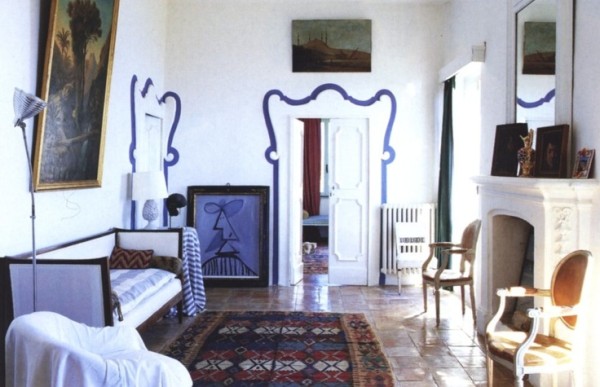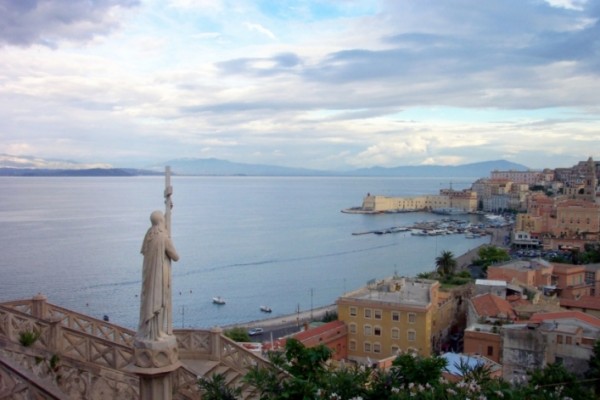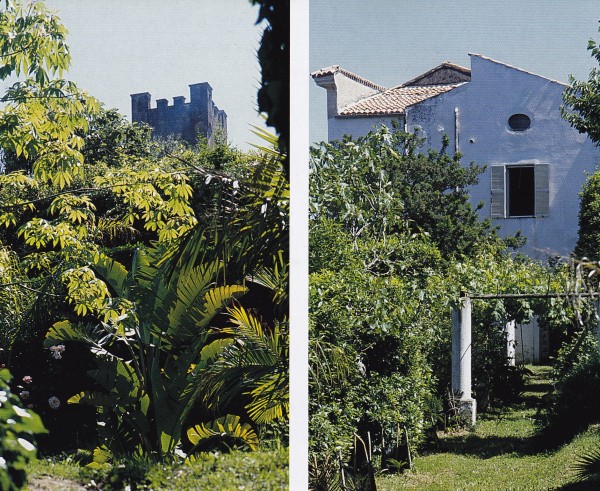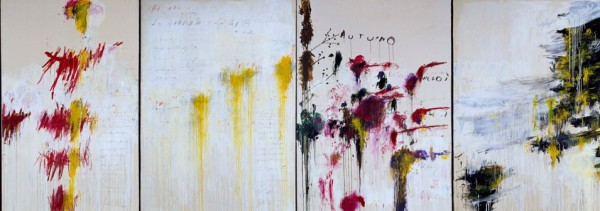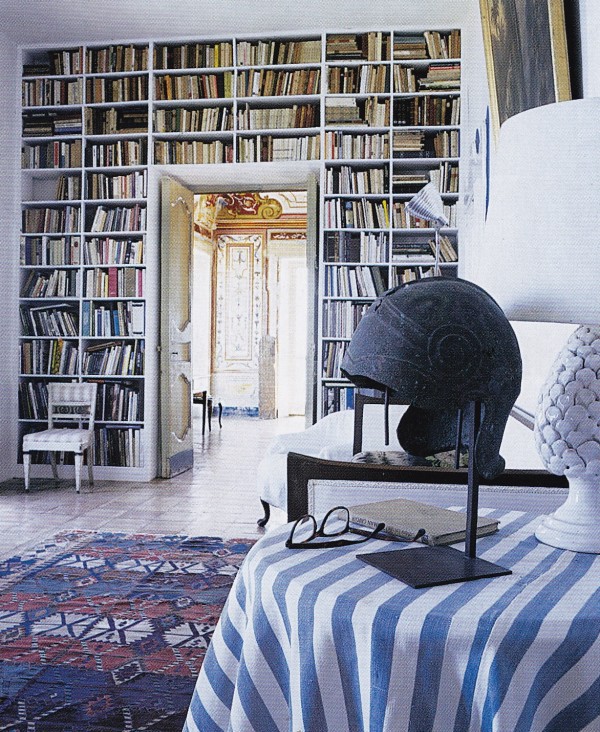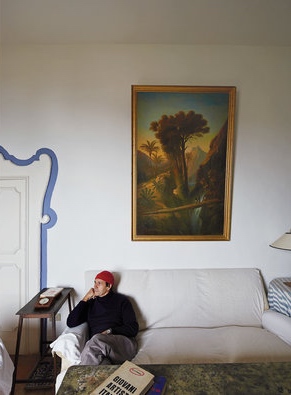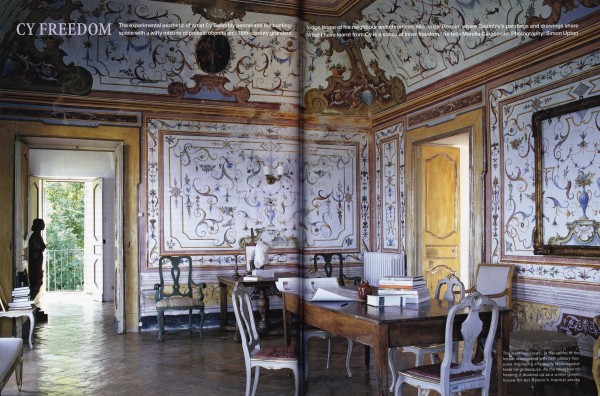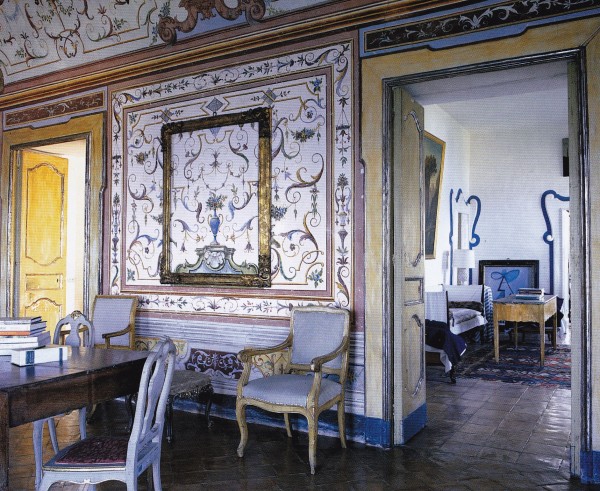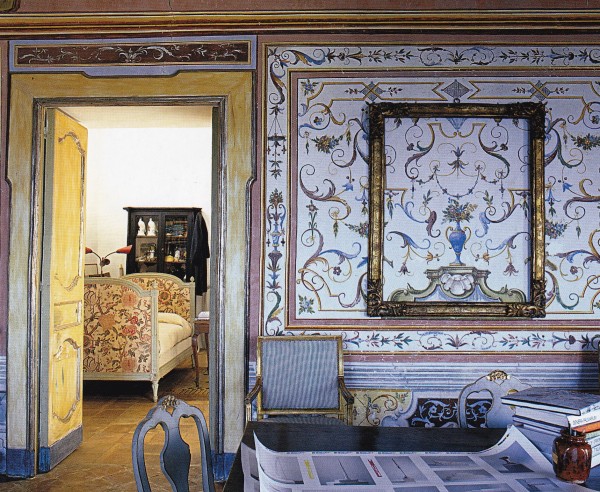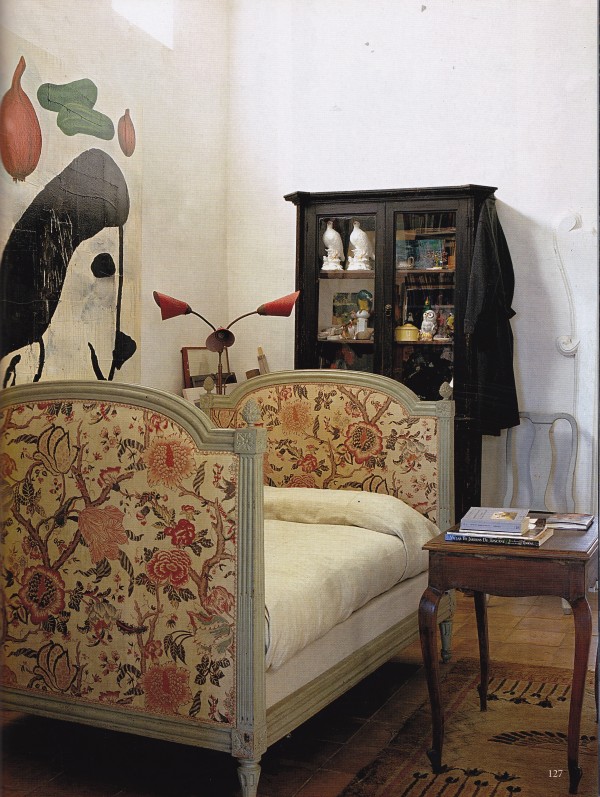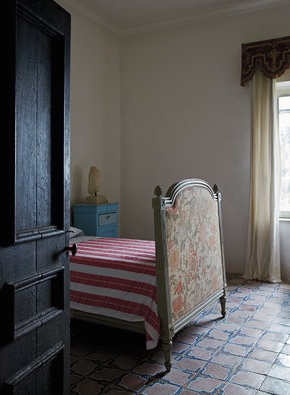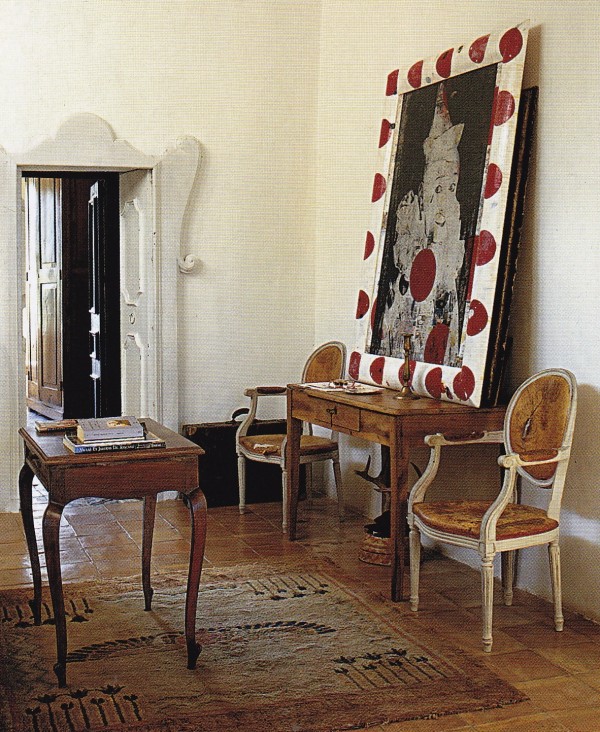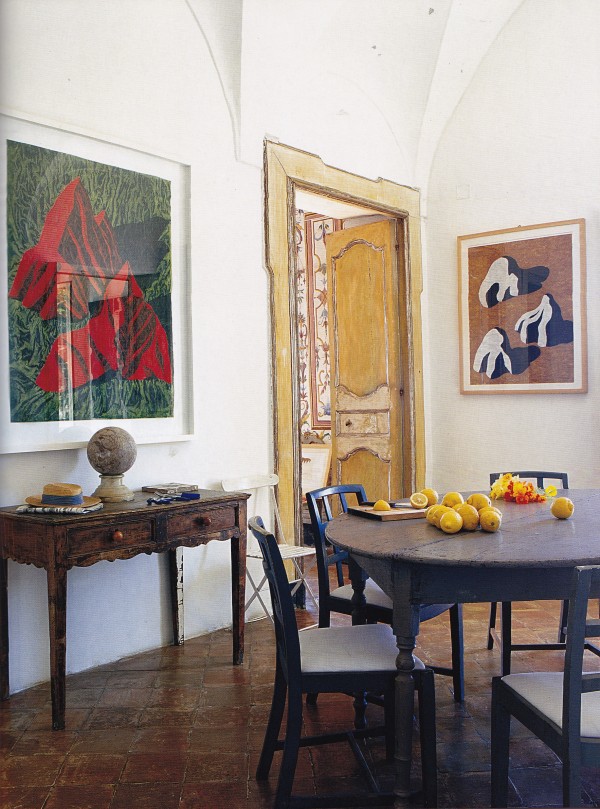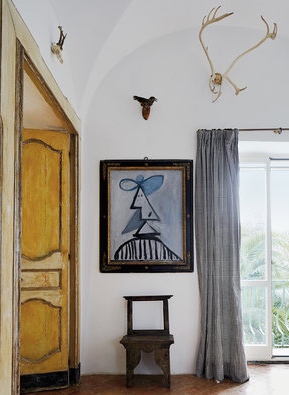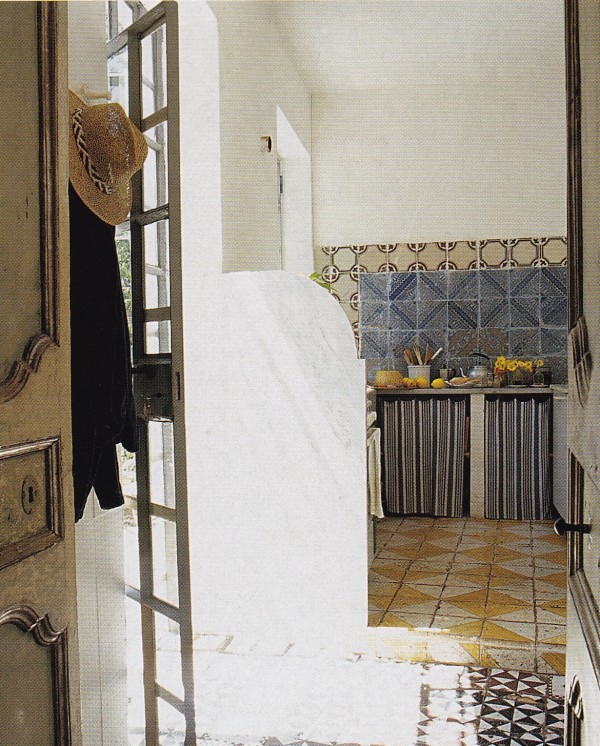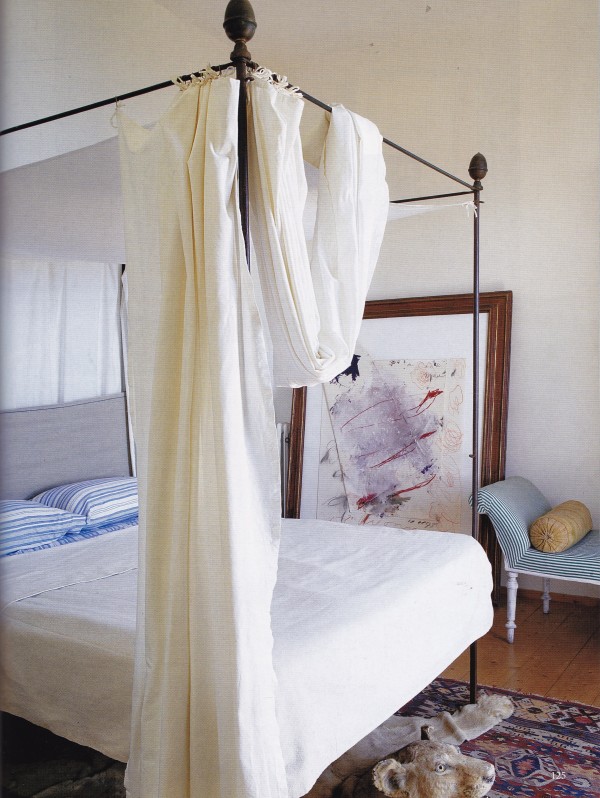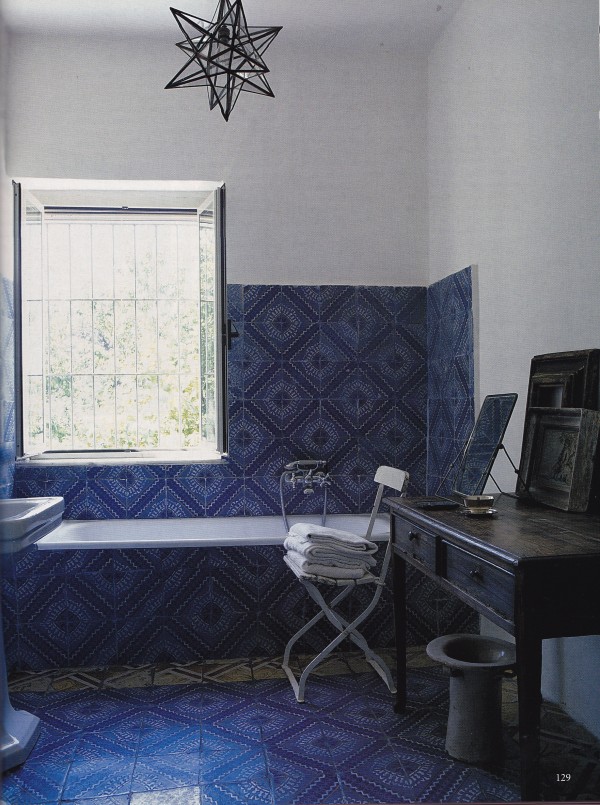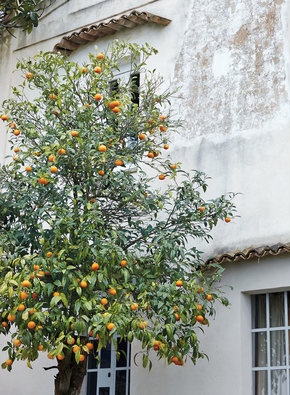The villa of Nicola del Roscio in the ancient fishing village of Gaeta, in the Lazio region of Italy, is quite possibly one of the most enchanting Italian villas I’ve laid my eyes on. My favorite – one I greatly admire and look to for endless inspiration – is the late Cy Twombly’s palazzo apartment in Rome (you can read why I savor it’s sublime beauty in my very first post The Art of the Room Inaugural Post). My mutual attraction is of no coincidence given these two men were companions for over forty years, del Roscio acting as Twombly’s assistant, archivist, and current director of the Cy Twombly Foundation following Twombly’s death in 2011. A recent and insightful article into their relationship in The New York Times Magazine, featuring an interview with del Roscio, prompted me to pull out my 2004 issue of The World of Interiors featuring his villa,, and sharing a few additional photos you may have not seen before.
Nicola del Roscio purchased his villa in Gaeta, north of Naples, in 1979 – returning to the place of his childhood, where he spent summers with his family – along with his companion, Cy Twombly, in tow. Nicola settled on an 18th-century house built on the site of an 11th-century tower with six acres, which he planted with his beloved collection of 142 species of palms from all over the world. Perched high on a hill overlooking the Tyrrhenian Sea, Mediterranean light and salted sea air permeates his rooms with a lingering memory of Virgil’s Aeneid. For several years Twombly decamped in a nearby hotel or with friends until deciding to buy a house and renting a studio in the early 1990’s. Although his rooms have appeared on many blogrolls I cannot resist adding them to my own in the next follow-up post.
I am forever enamored by rooms that bring out their creators inner life. Such rooms – free of pace-setting trends, do-it-yourself tips or decorator tricks – reveals the soul of place and the personal vision and aspirations of its inhabitant. In the case of del Roscio’s villa its rooms reflect both his own journey and that of his companion in friendship and business, Cy Twombly. For it was here the artist conceived his Quattro Stagioni (Four Seasons) series from 1993-95, and in the process putting the long forgotten fishing village of Gaeta back on the cultural map. Had we never been told, it would be easy to assume these rooms belonged to Cy Twombly – his creative vision, style and taste indelible.
From the sea to the villa, a tapestry of Mediterranean blue weaves through its rooms, from a painting by Twombly in the style of Picasso (top photo) and the azure blue painted bands framing the smaller salone‘s 18th-century Baroque-style carved wooden door frames, to the silvery blue tracery of 18th-century Neoclassical-style frescoes in the grand salone with its matching painted Italian chairs, to the 18th-century Neapolitan majolica tiles in the kitchen and bathroom. Another sign Twombly was present is found in an array of Neoclassical furniture placed nonchalantly here and there, floating and moving. Interspersed throughout are more humble pieces – provincial tables and chairs – along with personal collections that inspire and delight.
I love the energy of such rooms, seemingly in a flux of creative change … never fully finished … never compromised … letting in the light … open to hope and possibility, to freedom. As Marella Caracciolo succinctly declared in the article she wrote for The World of Interiors, “A permanent sense of ‘work in progress’ disrupts the rarefied elegance of the architecture.” How true of these rooms, where the Classical meets up with the provincial and Twombly’s experimental aesthetic still holds sway over arrangements of furniture and prosaic collections.
Del Roscio photographed by Simon Watson for T Magazine in the small sitting room, with a painting of the Brazilian wilderness, circa 1830, hanging above.
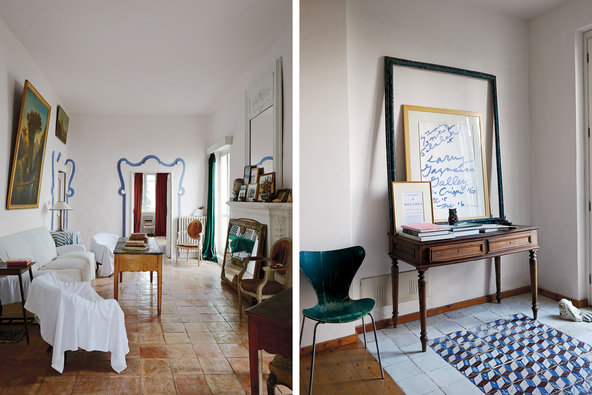
A rarely used sitting room in the main house, where the furniture is covered in muslin sheets and an antique mirror keeps cold air from entering through the fireplace; the entryway of the house where Del Roscio now stays when he is in Gaeta, with a chair by Arne Jacobsen, 18th-century Neapolitan floor tiles and a poster for a Twombly show at Gagosian Gallery from 2008, framed with a vintage Del Roscio find.(T Magazine; photos by Simon Watson).
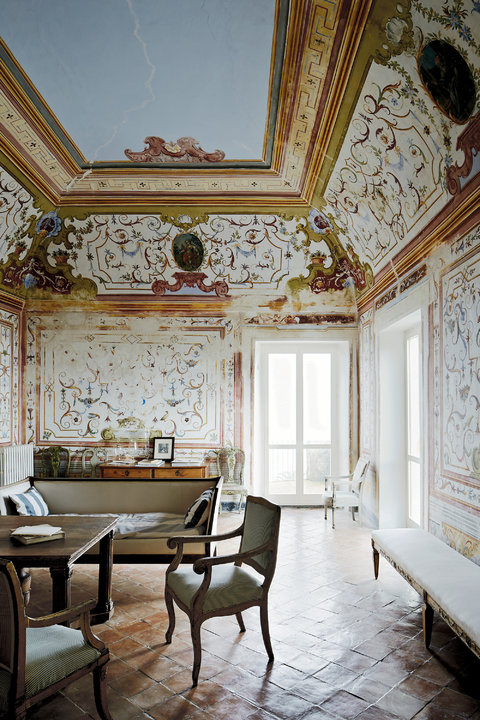
The grand sitting room of the main house that dates from A.D. 1000, with 18th-century frescoes thought to be by the artist Sebastiano Conca, a sofa from Andy Warhol’s home in Paris and terra-cotta tiles on the floor, handmade in a nearby village. (T Magazine; photo by Simon Watson).
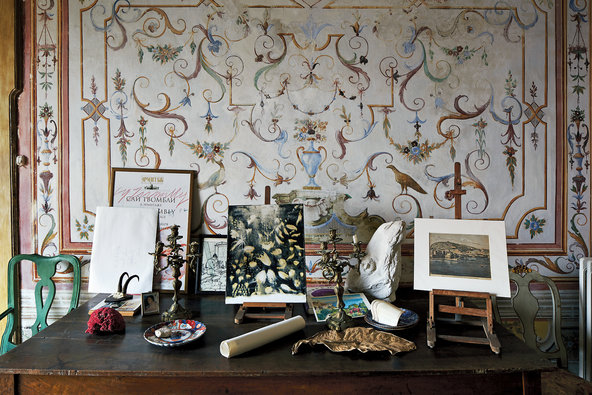
On a table in the grand sitting room, mementos including a poster for a Twombly exhibition in St. Petersburg, a Ross Bleckner painting, red coral and a leaf from the Seychelles, and a portrait of Del Roscio as a child by the artist Pasquale Di Fabio. (T Magazine; photo by Simon Watson).
A Donald Baecheler painting overlooks the guest room’s 1790’s French bed and provincial table.
The guest room as it appears today (T Magazine; photo by Simon Watson)
A clown painting by American artist Ford Beckman, supported by a 19th-century Italian table, sits between a pair of Russian Empire chairs in the guest room.
A lighthearted hand informs a mix of humble antiques in the barrel-vaulted dining room, including a 19th-century Neapolitan dining table with English Arts & Crafts chairs paired with early Eighties Italian paintings inspired by mountain scenes.
Today Twombly’s homage to Picasso hangs on a wall in the dining room.
Del Roscio’s bedroom features an 18th-century acorn-topped iron four-poster from Sicily and an abstract by Twombly dated 1988.
An orange tree outside the cottage house that stores Twombly’s archives (T Magazine; photo by Simon Watson)
Photography by Simon Upton for the June, 2004, issue of The World of Interiors and by Simon Watson for The New York Times Magazine, March 26, 2015.











